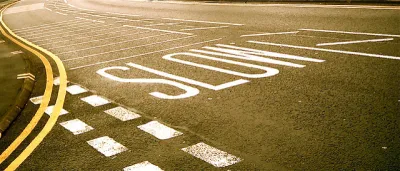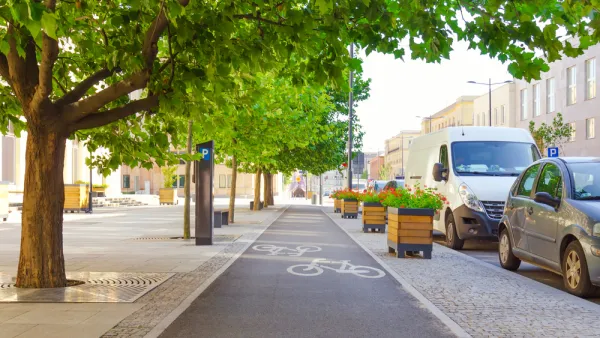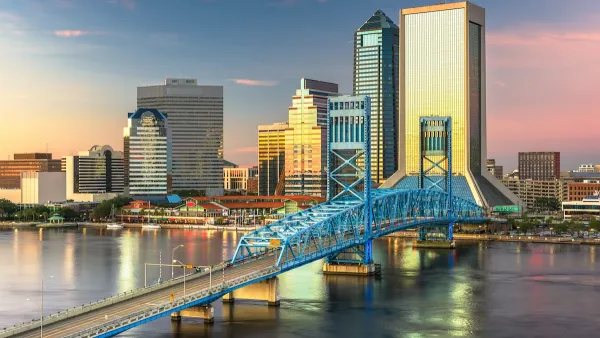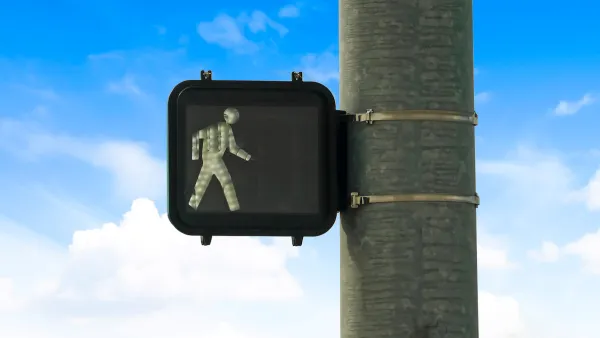While other countries are seeing fewer road deaths, traffic violence in the United States is back on the rise.

The rate of Americans dying in traffic crashes far outpaces that of most other developed nations, reports David Zipper for Bloomberg CityLab, begging the question: why?
While many Americans attribute the higher rate of road deaths to our reliance on cars, Zipper argues that, based on his extensive research on the topic, “The closer you look, the clearer it becomes that the US traffic safety crisis is not a reflection of geography or culture,” but rather of conscious policy decisions that privilege fast car travel and carmakers over road safety and multimodal transportation.
According to Zipper, this phenomenon took off more recently. In the 1970s and 1980s, the United States could claim to be a leader in road safety as innovations such as seatbelts and airbags became mandatory. “But in the last 30 years, the US has not kept pace with tumbling traffic death rates in Europe, east Asia and Canada. In 2021, as the US hit a 16-year high for fatalities, Japan and Norway posted the lowest number of road deaths since the 1940s.” Pedestrian death rates in the United States rose at even more alarming rates.
Zipper attributes this to a variety of factors, including the rise of car-free and ‘car-light’ zones in European cities, as well as the use of automatic traffic cameras and other safety improvements like road diets and roundabouts. Regulations on vehicle design play a role, too: “The European Union added pedestrian safety tests to NCAP crash ratings over two decades ago, and Japan, China and Australia now conduct them as well. The US still does not.” Other factors include comparatively low fuel taxes in the United States, land use patterns that encourage driving, and poorly resourced public transit systems.
Zipper suggests that the easiest solutions are the simplest. There’s no need to wait for technology to save us. Proven, analog tools for slowing traffic and prioritizing pedestrian safety already exist.
FULL STORY: US Traffic Safety Is Getting Worse, While Other Countries Improve

National Parks Layoffs Will Cause Communities to Lose Billions
Thousands of essential park workers were laid off this week, just before the busy spring break season.

Retro-silient?: America’s First “Eco-burb,” The Woodlands Turns 50
A master-planned community north of Houston offers lessons on green infrastructure and resilient design, but falls short of its founder’s lofty affordability and walkability goals.

Delivering for America Plan Will Downgrade Mail Service in at Least 49.5 Percent of Zip Codes
Republican and Democrat lawmakers criticize the plan for its disproportionate negative impact on rural communities.

Test News Post 1
This is a summary

Test News Headline 46
Test for the image on the front page.

Balancing Bombs and Butterflies: How the National Guard Protects a Rare Species
The National Guard at Fort Indiantown Gap uses GIS technology and land management strategies to balance military training with conservation efforts, ensuring the survival of the rare eastern regal fritillary butterfly.
Urban Design for Planners 1: Software Tools
This six-course series explores essential urban design concepts using open source software and equips planners with the tools they need to participate fully in the urban design process.
Planning for Universal Design
Learn the tools for implementing Universal Design in planning regulations.
EMC Planning Group, Inc.
Planetizen
Planetizen
Mpact (formerly Rail~Volution)
Great Falls Development Authority, Inc.
HUDs Office of Policy Development and Research
NYU Wagner Graduate School of Public Service





























